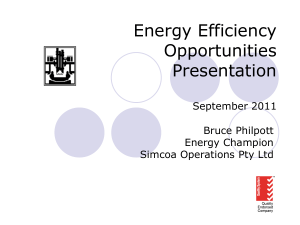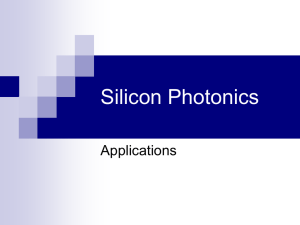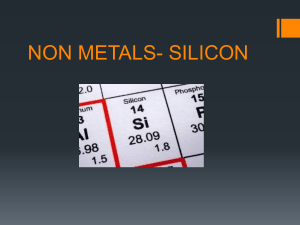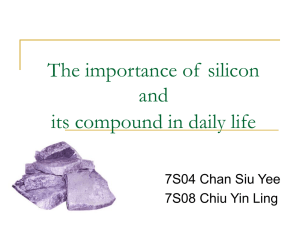Investigation plan
advertisement
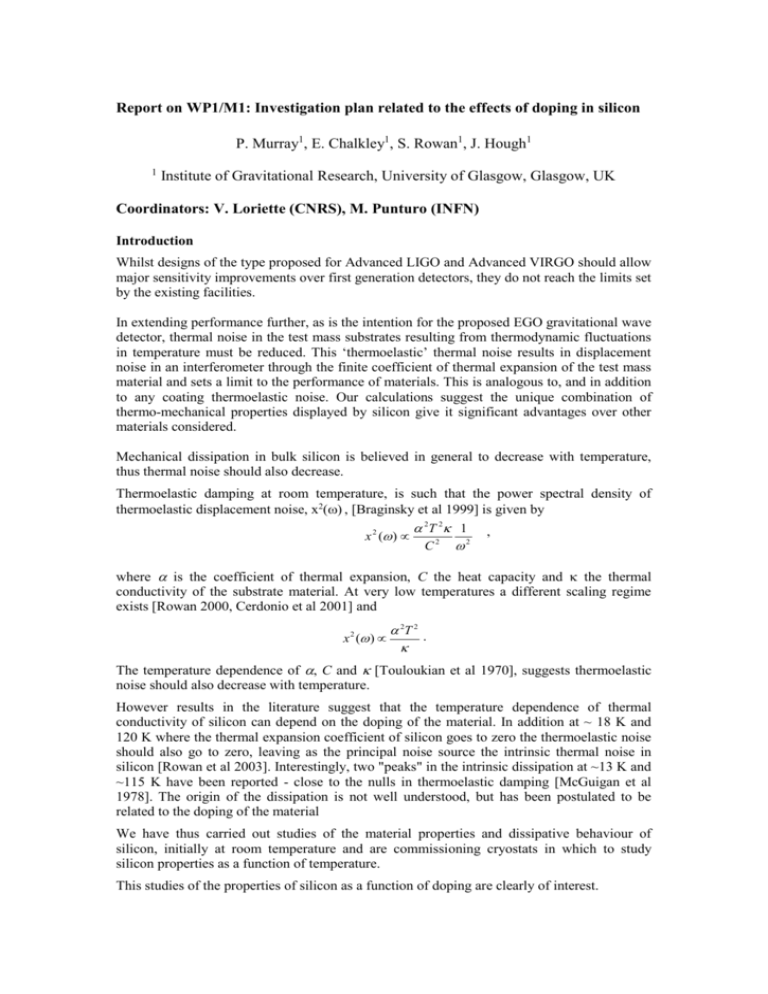
Report on WP1/M1: Investigation plan related to the effects of doping in silicon P. Murray1, E. Chalkley1, S. Rowan1, J. Hough1 1 Institute of Gravitational Research, University of Glasgow, Glasgow, UK Coordinators: V. Loriette (CNRS), M. Punturo (INFN) Introduction Whilst designs of the type proposed for Advanced LIGO and Advanced VIRGO should allow major sensitivity improvements over first generation detectors, they do not reach the limits set by the existing facilities. In extending performance further, as is the intention for the proposed EGO gravitational wave detector, thermal noise in the test mass substrates resulting from thermodynamic fluctuations in temperature must be reduced. This ‘thermoelastic’ thermal noise results in displacement noise in an interferometer through the finite coefficient of thermal expansion of the test mass material and sets a limit to the performance of materials. This is analogous to, and in addition to any coating thermoelastic noise. Our calculations suggest the unique combination of thermo-mechanical properties displayed by silicon give it significant advantages over other materials considered. Mechanical dissipation in bulk silicon is believed in general to decrease with temperature, thus thermal noise should also decrease. Thermoelastic damping at room temperature, is such that the power spectral density of thermoelastic displacement noise, x2() , [Braginsky et al 1999] is given by 2T 2 1 , x 2 ( ) C2 2 where is the coefficient of thermal expansion, C the heat capacity and the thermal conductivity of the substrate material. At very low temperatures a different scaling regime exists [Rowan 2000, Cerdonio et al 2001] and x 2 ( ) 2T 2 . The temperature dependence of , C and [Touloukian et al 1970], suggests thermoelastic noise should also decrease with temperature. However results in the literature suggest that the temperature dependence of thermal conductivity of silicon can depend on the doping of the material. In addition at ~ 18 K and 120 K where the thermal expansion coefficient of silicon goes to zero the thermoelastic noise should also go to zero, leaving as the principal noise source the intrinsic thermal noise in silicon [Rowan et al 2003]. Interestingly, two "peaks" in the intrinsic dissipation at ~13 K and ~115 K have been reported - close to the nulls in thermoelastic damping [McGuigan et al 1978]. The origin of the dissipation is not well understood, but has been postulated to be related to the doping of the material We have thus carried out studies of the material properties and dissipative behaviour of silicon, initially at room temperature and are commissioning cryostats in which to study silicon properties as a function of temperature. This studies of the properties of silicon as a function of doping are clearly of interest. Experimental studies We are thus using (a) bulk cylinders of silicon as samples on which to study the intrinsic dissipation of silicon, at resonant frequencies in the kHz region where thermoelastic damping is negligible and (b) thin silicon cantilevers, with resonant frequencies in the tens of Hz to ~1 kHz to study levels of thermo-elastic damping, in the frequency range of interest for gravitational wave detection. The results for the studies of the cantilever samples are described under a separate workpackage. The bulk samples have been fabricated from both commercial boron-doped silicon and also nominally undoped material in an attempt to identify any differences in behaviour associated with the different doping levels. However so far we believe that any differences we see in the samples are a result of the cut of the sample influencing the measured Q, possibly through the effect of the crystal orientation on mode shape and thus coupling to the support structure. To further investigate this possibility we have procured samples of the same doping but of different aspect ratios and cuts. Measured loss factors for two of these samples are shown in figure 1, where the results shown are consistent with our postulate that we are not yet measuring dopant-related dissipation, but dissipation perhaps due to the support structure used. 14 12 [111] Silicon [100] Silicon Q (x10 7) 10 8 6 4 2 . 0 20000 30000 40000 50000 60000 70000 80000 Freq (Hz) Figure 1 Measured loss factors for a number of modes of two samples of silicon of nominally identical material, surface polish and dimensions (3” by 1”), but cut along different crystalline axes Previous work by Numata et al showed that for some subset of modes of a sample a support, which contacts the sample at positions of minimum or zero displacement, can give low support losses. We have thus constructed a prototype ‘nodal support’ system to attempt to reduce suspension losses for these modes, and allow dopant related properties to be studied. Colleagues in Jena are also studying the loss factors of bulk silicon samples and plans to exchange samples for joint study are currently under discussion. Once support losses have been reduced further we will first revisit the study of the mechanical dissipation of doped versus undoped silicon samples. We will then use the results of that study to inform further experiments to study silicon samples with different levels of doping. (a) (b) Figure 2 (a) Prototype nodal support system (b) Typical mode shapes for which this type of system may be appropriate References [Braginsky et al 1999] Thermodynamical fluctuations and photo-thermal shot noise in gravitational wave antennae, V.B. Braginsky, M.L. Gorodetsky and S.P. Vyatchanin, Phys. Lett. A 264, 1-10, 1999 [Cerdonio et al 2001] Thermoelastic effects at low temperatures and quantum limits in displacement measurements, M. Cerdonio, L. Conti, A. Heidmann and M. Pinard, Phys. Rev. D 63, e082003/1-9, 2001 [Rowan et al 2003] Test mass materials for a new generation of gravitational wave detectors, S. Rowan, R.L. Byer, M.M. Fejer, R. Route, G. Cagnoli, D.R.M. Crooks, J. Hough, P.H. Sneddon, W. Winkler, in Proceedings of SPIE Vol 4856 Gravitational Wave Detection, edited by Mike Cruise, Peter Saulson (SPIE, Wellingham, WA) 292 – 297, 2003 [Rowan 2000] S. Rowan, Presented at the Aspen Winter Conference on Gravitational Waves, Aspen, Colorado, January 2000 [McGuigan et al 1978] Measurement of mechanical Q of single-crystal silicon at low temperatures, D. F. McGuigan, C. C. Lam, R. Q. Gram, A. W. Hoffmann, D. H. Douglass, H. W. Gutche, Journal of Low Temperature Physics, 30, 621, 1978 [Touloukian et al 1970]

